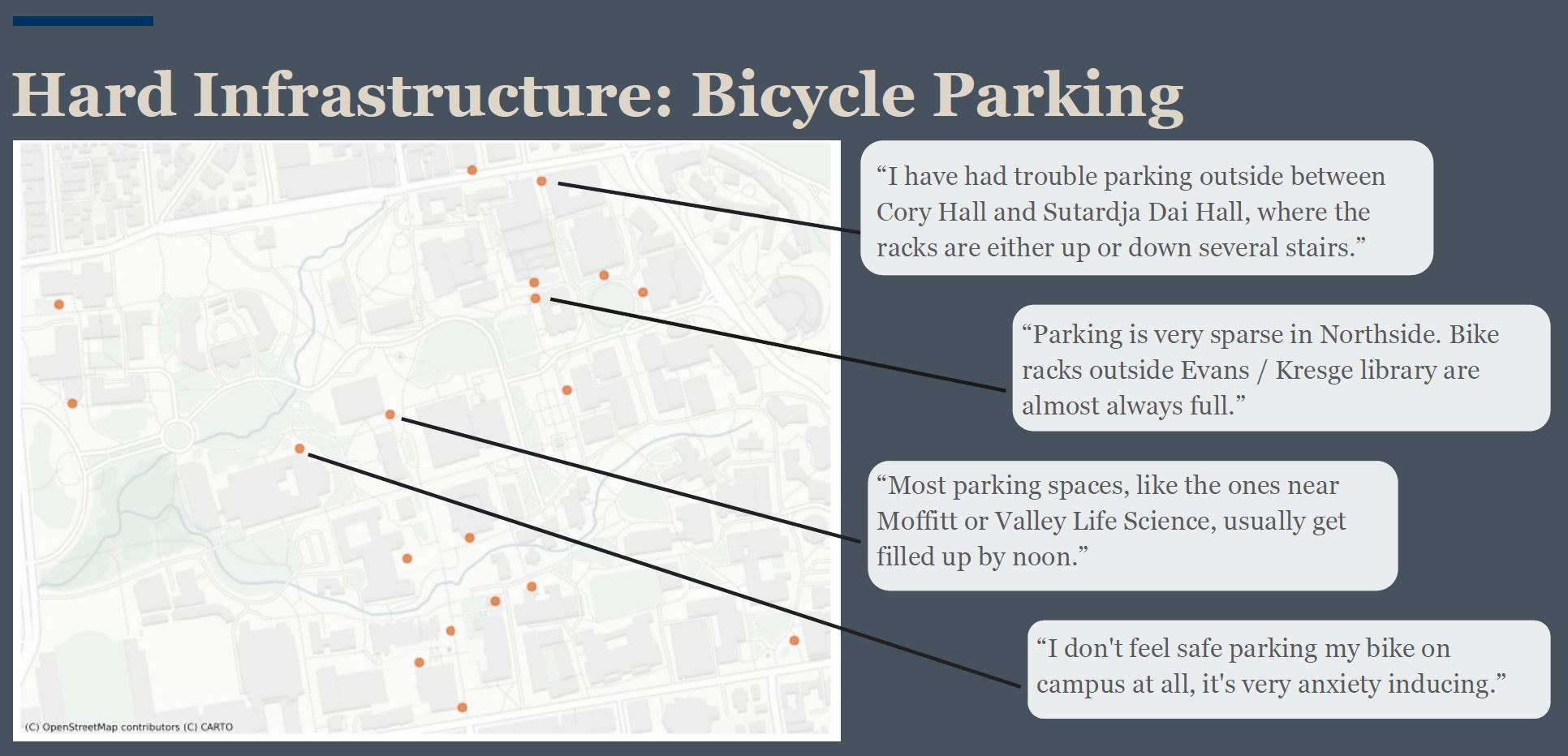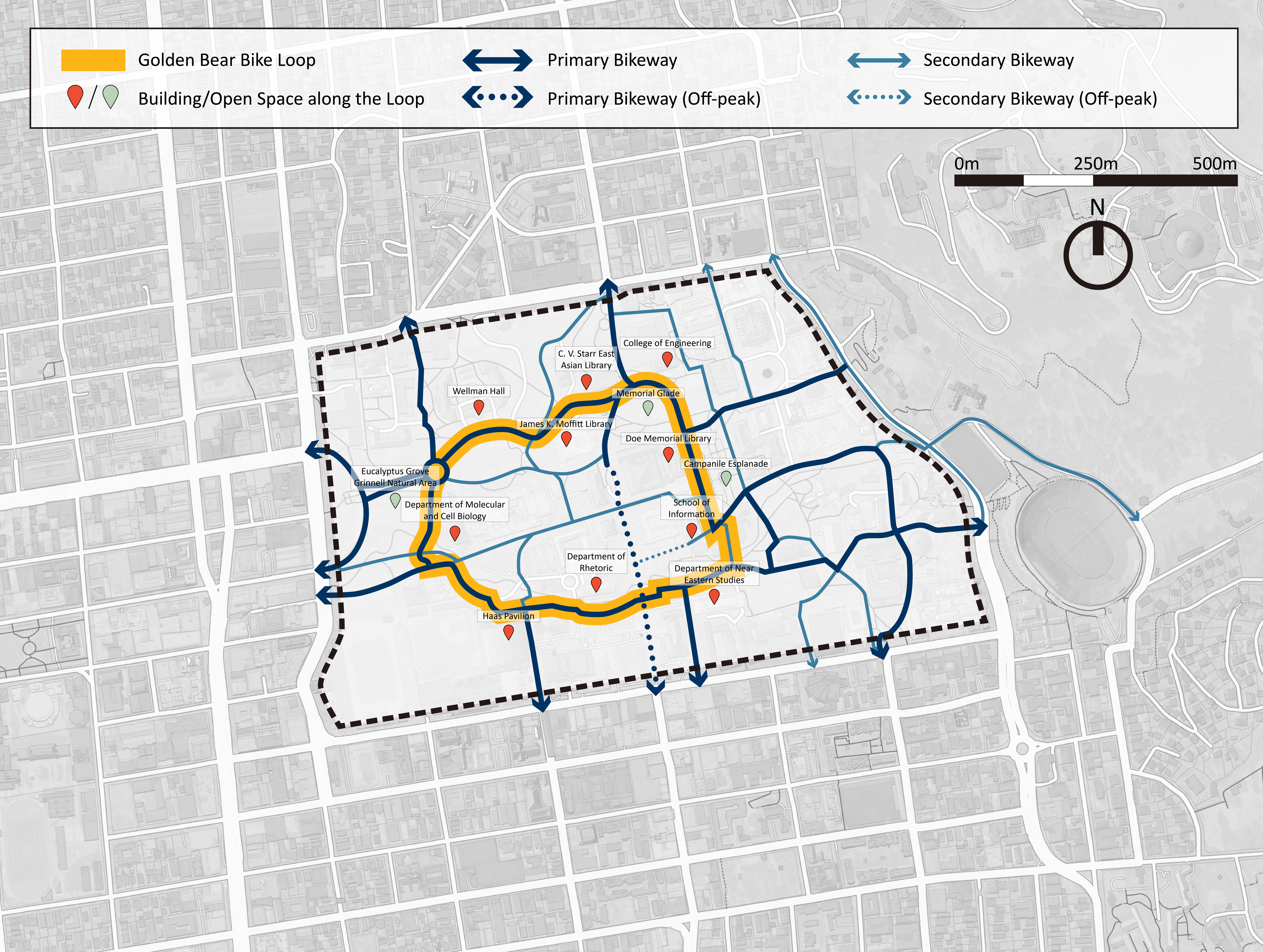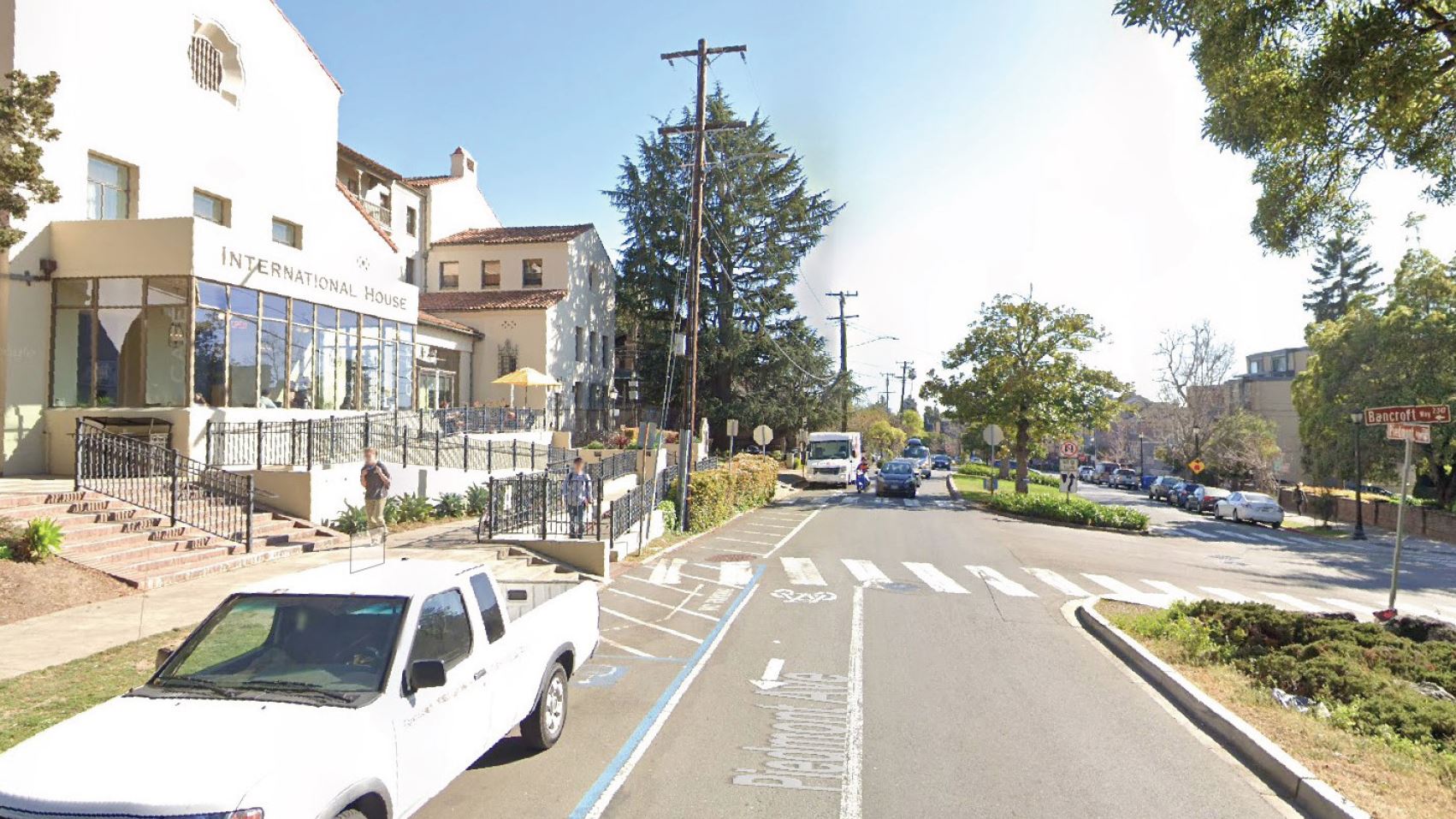UC Berkeley Campus Bike Plan Micro-Revision
Final Project for CP216
Dec, 2020
Created by: Kevin Dumler, Hunter Oatman-Stanford, Sydney Maves, Jonathan Kupfer, Rourke Healey, Shuyue Chen, Tiffany Pham, and Ethan Ebinger
Assessment of Current Campus Bicycle Plan
The last (and first) UC Berkeley bicycle plan was published in 2006. The plan focuses on the central campus with the goal to improve bicycle access and safety for community members. The plan itended to make updates every 5 years and implement all recommended projects and programs within 10 years. However, not all of the highlighted goals have been met and there is a need for a new plan to meet changing demands.
The new plan should develop critical policies and programs to engage with emerging trends in mobility, enhance safety and experience through physical infrastructure improvements, and build out educational programs and bicycle resources on campus. Our micro-revision identifies some of these needs, which were shared with the campus transportation planning team as they work on the full plan. Our report includes measures for tracking progress and plans for coordinating efforts on- and off-campus.
Recommendations for Infrastructure Improvements
Our team distributed a survey to bicyclists on campus in order to ground our report and identify campus needs. We collected the top reasons for bicyling (exercise, trip speed and convenience, affordability, environmental impact), top reasons for not biking (bad weather, unsafe infrastructure/traffic, crowded plazas), and improvements they hoped to see. Respondents identified many streets in Berkeley & near campus where they feel unsafe, and locations on campus where additional bike parking or better theft prevention is needed. We used these responses to identify hard and soft infrastructure improvements that can be made.

The survey results, together with an audit of bicycle parking spaces on campus, led to the following infratructure recommfound that bike parking is sometimes insufficient or not secure enough. Secure bike parking was noted to be confusing to use and subject to misuse. Based off these findings we made the following bicycle parking recommendations:
- Update bicycle parking map, identifying parking locations and number of spaces outside of central campus (i.e. dorms)
- Survey utilization and increase parking at locations with lowest supply (i.e. McLaughlin & Evans Hall)
- Add long-term, secure storage (lockers, bike valet, etc.)
- Phase out wave racks; inverted-U rack as campus standard (more secure)
Another piece of hard infrastructure that was requested is bike lanes on campus. People felt unsafe when having to pass through a pedestrian plaza. To address these concerns we identified a Golden Bear Bike Loop as the main bicycle thoroughfare. Striping and tubular markers can formalize the loop and help separate different speeds of active transportation.

Map of the Golden Bear Bike Loop. Created by Shuyue Chen.
Soft infrastructure, like wayfinding, is an immediate solution to navigational concerns that can still be used after full buildout. We suggested installing maps at each node of the Golden Bear Bike Loop. Consistently themed wayfinding and signage along the route will benefit both bicyclists and pedestrians.Dilineating Class 1 bike lanes on wider streets on campus can also address concerns of bicycles and vehicle traffic.
Policies and Programming
To assist in the evaluation, coordination, and planning, the following recommendations were developed to achieve the goals outlined above:
-
Programming
- Devote additional staff hours to bicycle programming
- Partner with ASUC, provide funding and resources to BicyCAL. Expanding BicyCAL can include adding retail operations, extending operating hours, and adding semester-long rentals
- Schedule regular updates to bicycle plan
- Expand the scope of the bike plan to include U.C. Berkeley facilities beyond the Central Campus, including off campus housing
- Identify and advocate for bike routes which are critical to the transportation network between U.C.Berkeley properties
- Coordinate between city, transit agencies, and campus decision makers
- Increase the monthly Bay Wheels discount, extend discounted memberships to faculty and staff members, and publicize the discount program
- Designate more locations for Bay Wheels docks on campus and along its borders
- Update U.C. Berkeley’s micromobility regulations
- Designate safe micromobility parking areas near every major destination and building on campus
- Install new mobility hubs to assist with bike maintenance and navigation
- Increase awareness of discounted Bay Wheels membership for low-income and Educational Opportunity Program (EOP) students and staff
- Provide free or discounted rental services, repair services, bike locks, and safety classes for EOP and other underrepresented student populations
- Work with the Disability Access & Compliance Office to ensure accessible paths and priority routes for the disabled
Plan Updates, Context, and Scope
Micromobility

The pedestrian buffer on the left (in front of I-House) would make a good location for a new Bay Wheels dock.
Equity
Measuring Success
Setting goals is only part of the plan. We recommended the key performance indicators and mechanisms to ensure transportation planners on campus can reach milestones and validate progress after we have graduated.
 Example of key performance indicators to track plan goals.
Example of key performance indicators to track plan goals.
Additionally, we recommended that an annual campus survey should be distributed to monitor bicyle behavior and attitudes/perceptions. Annual outreach must include working with the disability comunity to understand barriers. We developed a template survey to use. The main themes in our questions include: demographics and equity, biking experience and barriers, infrastructure and wayfinding, safety, micromobility, and outreach and education.